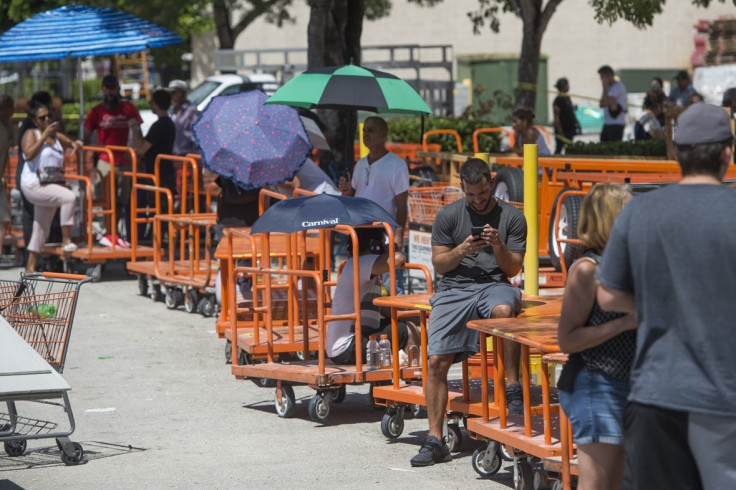Why Hurricane Irma could be more catastrophic than Hurricane Andrew
Hurricane Andrew left devastation behind in Florida, Irma looks set to be even worse.
In the next few hours, Hurricane Irma, which has already claimed dozens of lives across the Caribbean, is due to hit Florida.
Some 6 million people have been evacuated from Florida, almost a third of the state's population.
For many in the Sunshine State, the events will be bringing back memories of the last Category 5 storm to strike Florida - Hurricane Andrew - the most deadly hurricane to ever hit the state, at the time.
In August 1992, 65 people were killed and more than $32bn of damage was caused when the storm struck.
But Andrew was relatively puny compared to Irma potential destructive power.
The 1992 storm measured more than 100 miles across when it passed over Florida, whereas the monster that is Irma comes in at more than 800 miles wide and is set to engulf the entire state.
Their paths also differed too, Andrew came from a southeasterly direction and was only over Florida for a comparatively short space of time.
However, Irma is set to move northwards right along the spine of Florida, meaning that the entire state will be affected.
Jim Kossin, an atmospheric scientist with the US National Oceanic and Atmospheric Administration, told Wired: "Irma is anomalous. This is a record-breaker. Unprecedented. Catastrophic."
Of all the deaths caused by hurricanes between 1963 and 2012, 49% of these were by storm surges rather than winds themselves and as Ima strikes, it is the devastating storm surge potential that is terrifying officials.
When Hurricane Katrina struck Louisiana in 2005 killing up to 1,800 residents of New Orleans, it was so deadly because many were caught out by sudden storm surges and drowned.
Current sea levels around the Gulf of Mexico are more than two inches higher than in 2005 meaning that the strength of a storm surge could be even greater.
Meanwhile, Hurricane Andrew created a surge of more than 17ft, but the areas it hit were not as densely populated as they are today.
The storm is also being fed by warm waters of around 30C which is re-energising the storm which had lost some of its strength.
I combined the images of Hurricane Andrew (1992) & Hurricane Irma (today) at scale in a gif. Irma is a damn leviathan. pic.twitter.com/4HEw1NNxxd
— Joel 🌮 (@JoelNihlean) September 7, 2017

© Copyright IBTimes 2025. All rights reserved.






















